Seasonic SSR-650PX PSU Review: High Performance Without Breaking The Bank
Why you can trust Tom's Hardware
Ripple Measurements
To learn how we measure ripple, please click here.
The following table includes the ripple levels we measured on the SSR-650PX’s rails. The limits, according to the ATX specification, are 120mV (+12V) and 50mV (5V, 3.3V, and 5VSB).
| Test | 12V | 5V | 3.3V | 5VSB | Pass/Fail |
|---|---|---|---|---|---|
| 10% Load | 8.1mV | 4.8mV | 3.7mV | 3.9mV | Pass |
| 20% Load | 11.7mV | 5.6mV | 4.3mV | 4.3mV | Pass |
| 30% Load | 14.3mV | 6.0mV | 4.9mV | 4.4mV | Pass |
| 40% Load | 17.0mV | 6.5mV | 5.6mV | 4.7mV | Pass |
| 50% Load | 19.0mV | 7.9mV | 6.5mV | 4.9mV | Pass |
| 60% Load | 20.4mV | 9.3mV | 7.1mV | 5.4mV | Pass |
| 70% Load | 22.1mV | 10.4mV | 8.2mV | 7.2mV | Pass |
| 80% Load | 22.4mV | 10.9mV | 9.0mV | 9.5mV | Pass |
| 90% Load | 23.4mV | 9.9mV | 9.0mV | 9.8mV | Pass |
| 100% Load | 24.5mV | 11.0mV | 9.4mV | 8.1mV | Pass |
| 110% Load | 26.7mV | 11.5mV | 9.7mV | 8.9mV | Pass |
| Cross-Load 1 | 10.6mV | 9.5mV | 8.4mV | 5.2mV | Pass |
| Cross-Load 2 | 24.9mV | 8.2mV | 5.6mV | 7.8mV | Pass |

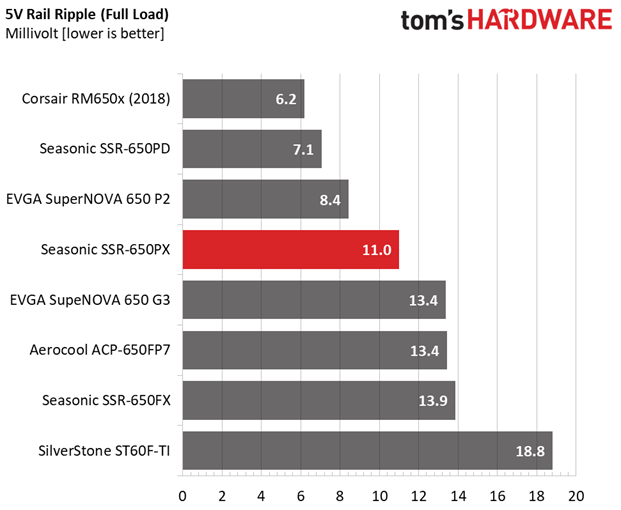
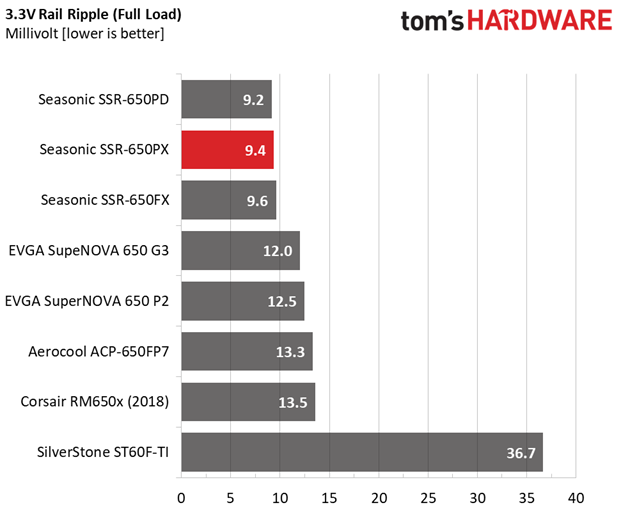
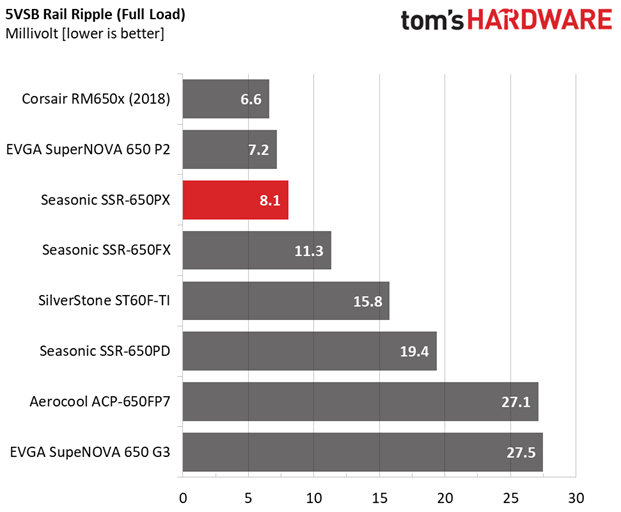
The ripple suppression on every rail is very good. This platform's design, along with the extra filtering caps in the modular cables, make these results possible.
Ripple Oscilloscope Screenshots
The following oscilloscope screenshots illustrate the AC ripple and noise registered on the main rails (+12V, 5V, 3.3V, and 5VSB). The bigger the fluctuations on the screen, the bigger the ripple/noise. We set 0.01 V/Div (each vertical division/box equals 0.01V) as the standard for all measurements.
Ripple At Full Load
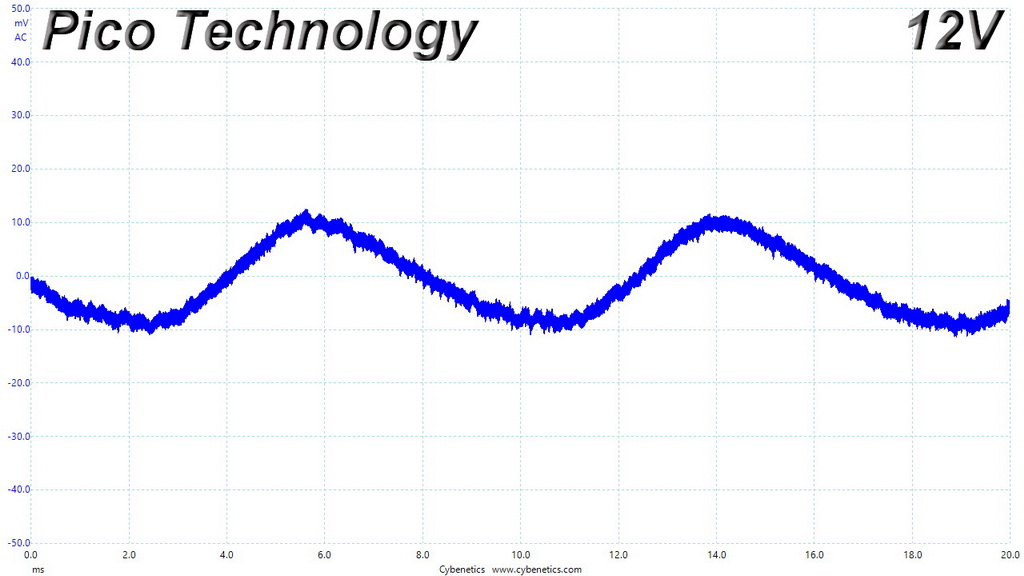

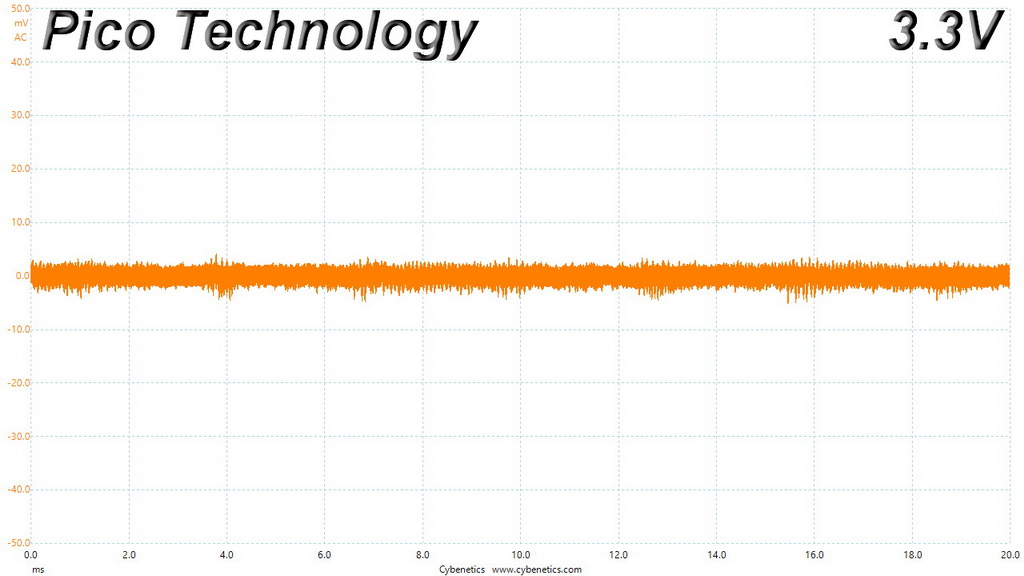

Ripple At 110-Percent Load
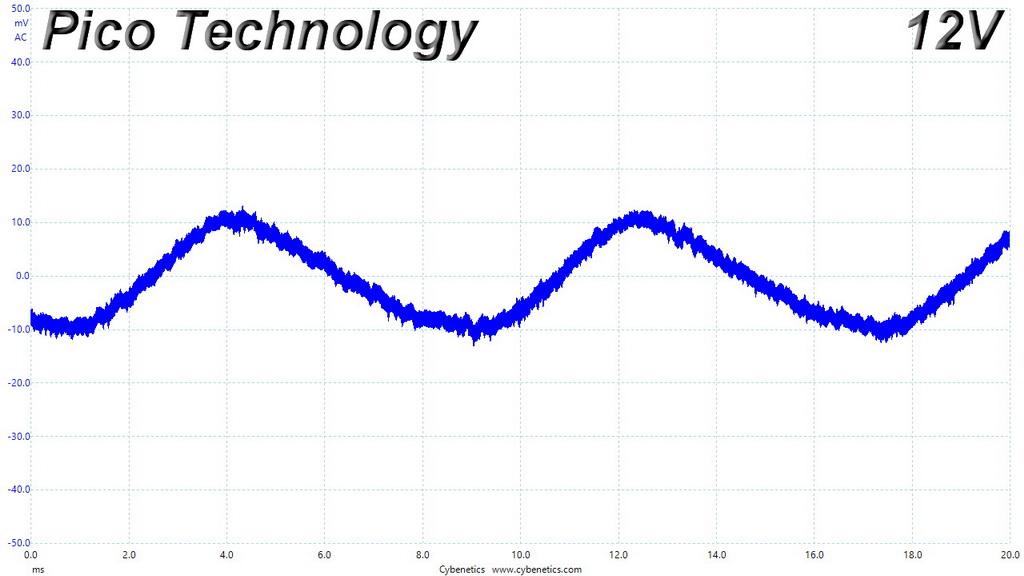
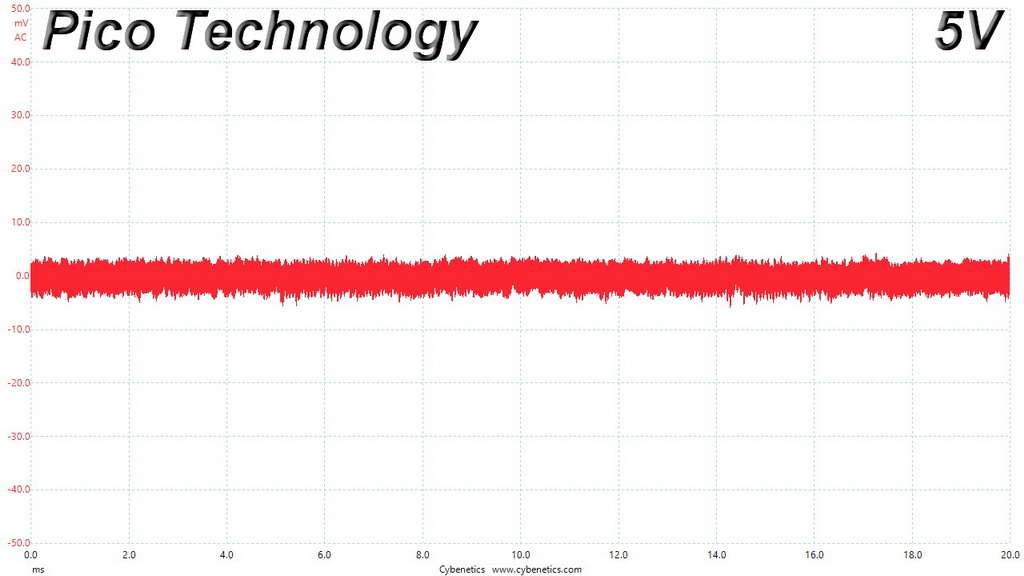

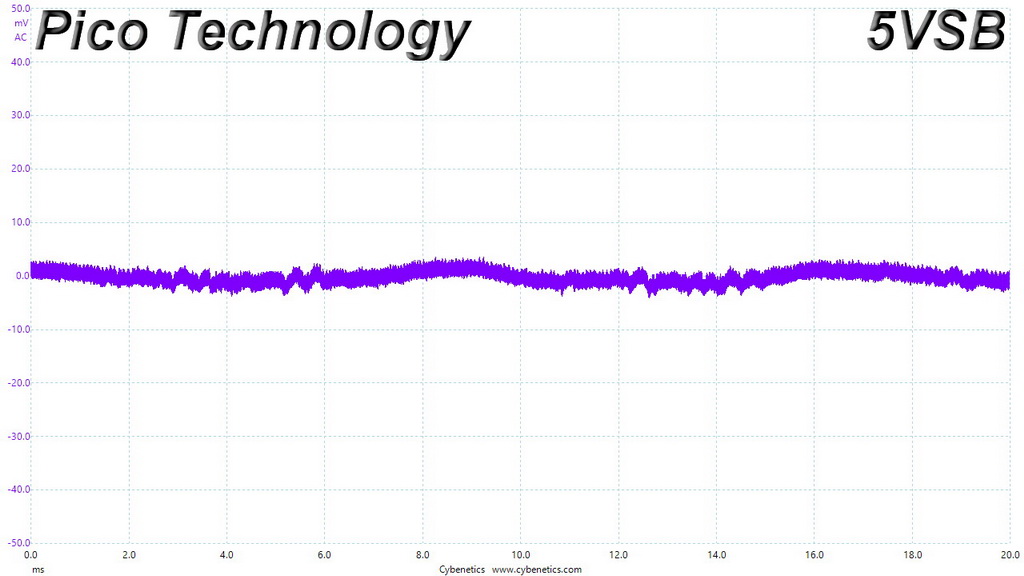
Ripple At Cross-Load 1
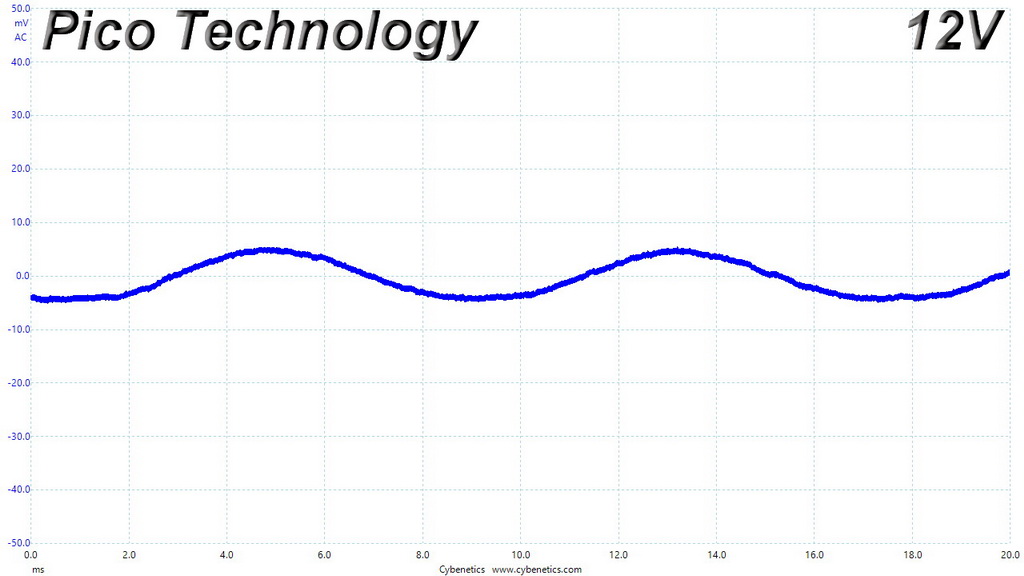
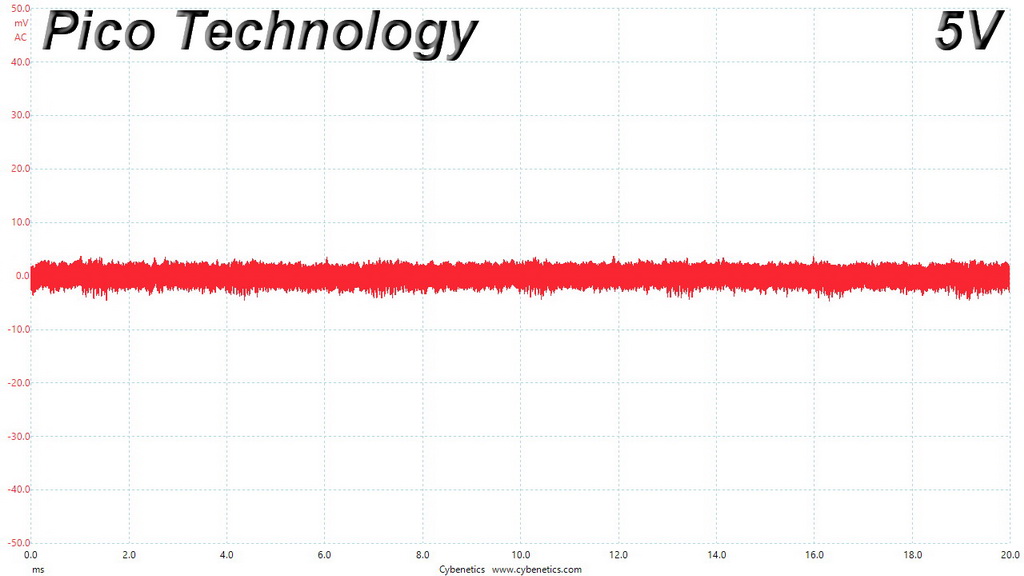
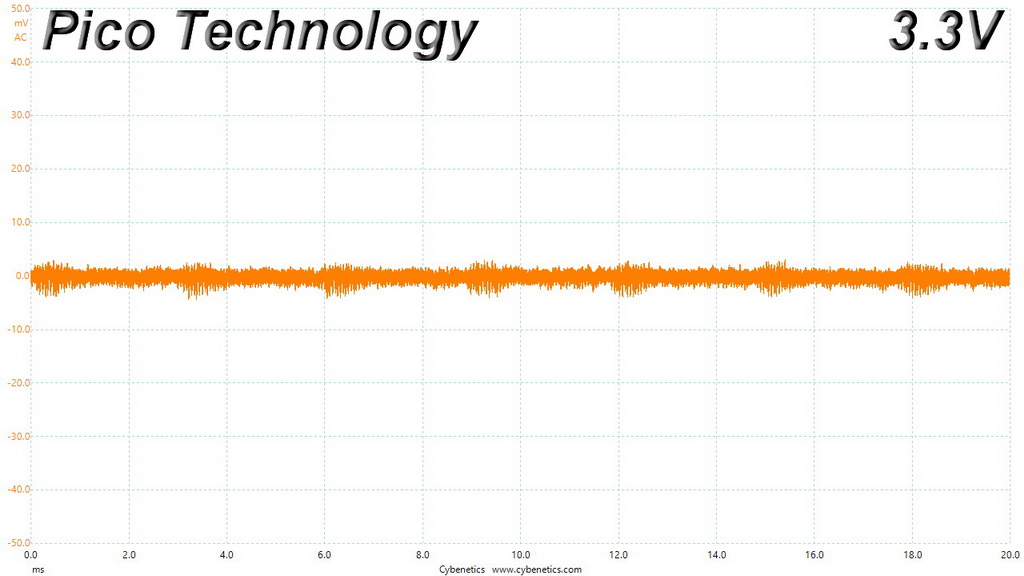
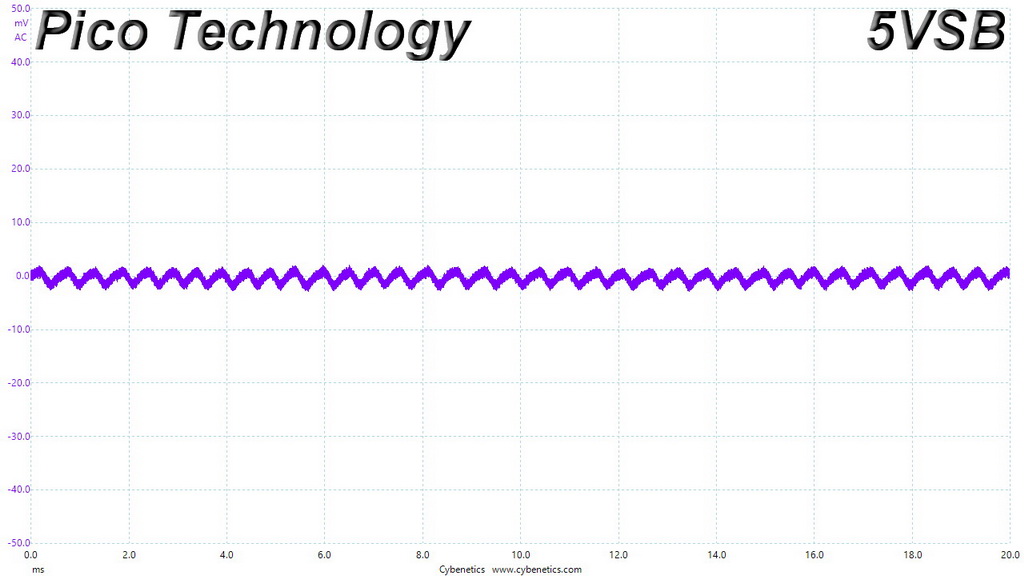
Ripple At Cross-Load 2
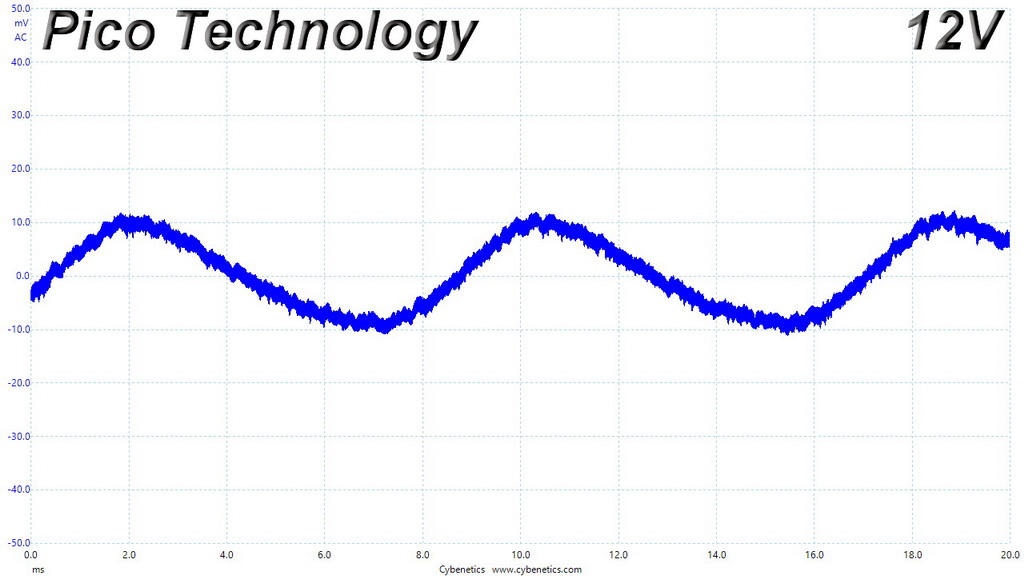
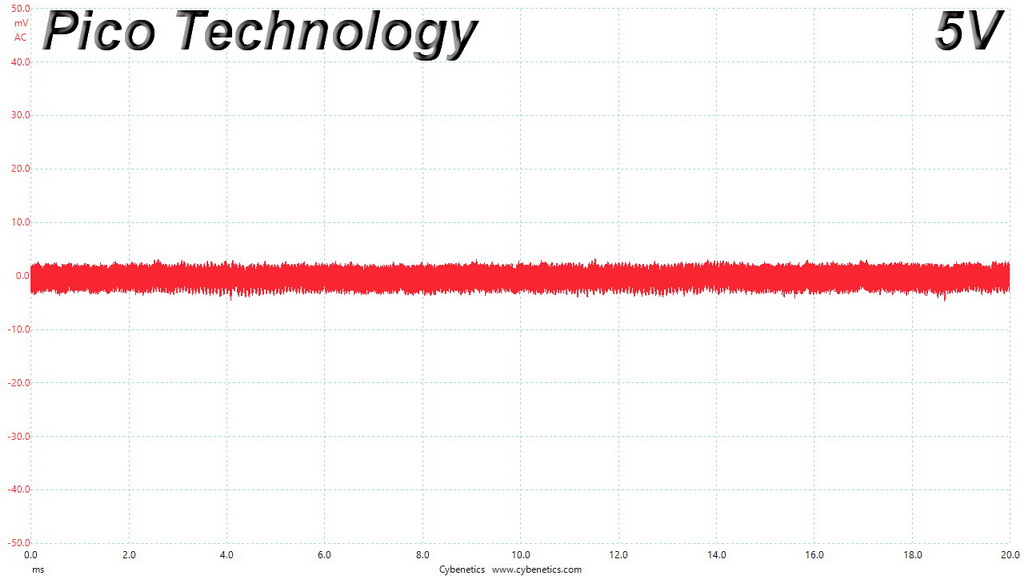
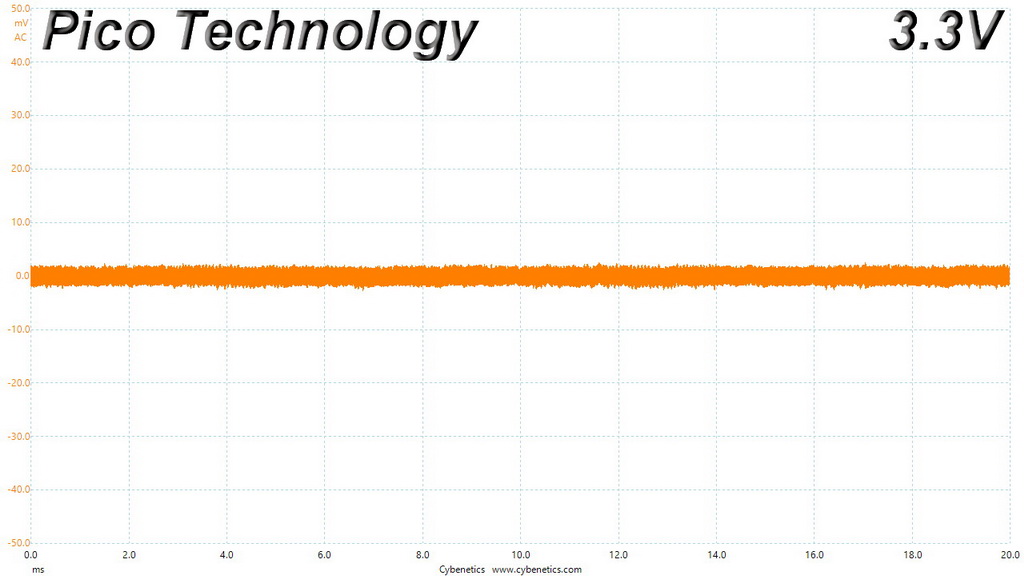
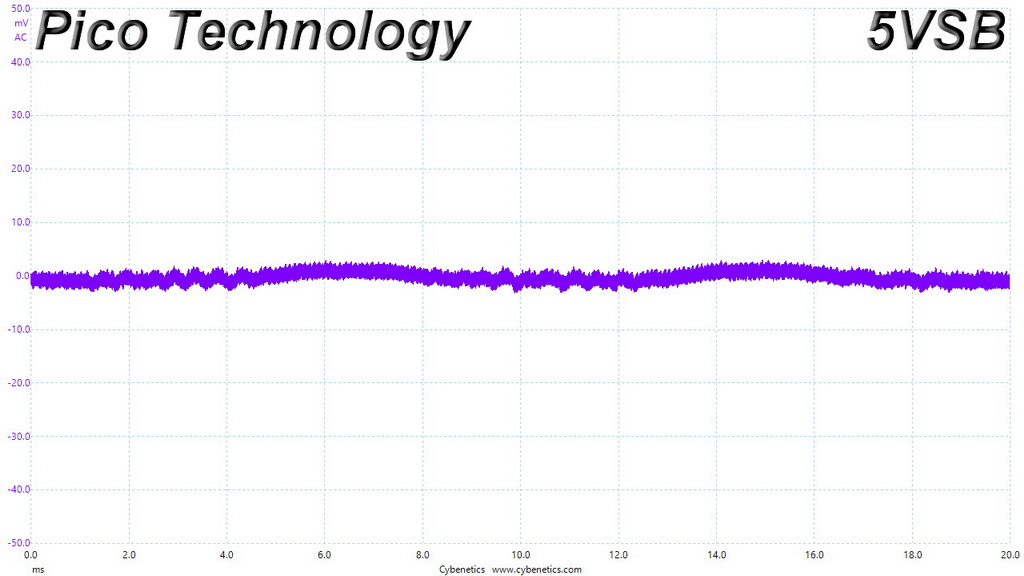
MORE: Best Power Supplies
MORE: How We Test Power Supplies
MORE: All Power Supply Content
Get Tom's Hardware's best news and in-depth reviews, straight to your inbox.
Current page: Ripple Measurements
Prev Page Transient Response Tests Next Page EMC Pre-Compliance Testing
Aris Mpitziopoulos is a contributing editor at Tom's Hardware, covering PSUs.
-
DookieDraws I won't put anything in my builds, or builds I do for others, other than a Seasonic PSU. Used them for years and have never had any issues. Not saying there isn't any other reliable brands out there, as I know there are, but I'm sticking with what has worked for me.Reply -
mlee 2500 What a Coincidence! I bought this very same Seasonic 650PX Power Supply and just last night finally took it out of the box to prep for my new build...and here I find a review for it!!Reply
The author makes an excellent point that a 2nd modular EPS cable really should be standard these days. With motherboards now supporting USB 3.1, integrated WiFi, a whole slew of 2A fan/pump connectors and tons of other power-drawing features which hardly even existed a decade ago, a second EPS is quickly becoming the norm rather then the exception.
In my case, with the very popular ASrock Taichi Z series motherboards which requires three connectors (1x24, 1x8, 1x4), I need to obtain a second additional 8pin to 2x4 modular cable. I just happened to contact Seasonic about that not an hour before seeing this review and learned that www.btosinte.com is their approved distributor and that such a cable costs about $5.00
If you do need to buy an additional EPS cable, BE SURE TO GET THE ONE WITH THE INLINE CAPACITOR, for the newer SSR series!!
It was interesting to learn from this article that providing a second EPS cable isn't really typical for most vendors 650W power supplies, which makes me feel better about being in that predicament with Seasonic. I was initially a bit disappointed, but then I've never had a Desktop mobo which required so many connectors before.
All that being said this appears to be an outstanding power supply, a great value, and given that my previous modular Seasonic Power Supply is still running great after more then 6 years, I remain a Seasonic customer until proven I shouldn't be. -
Aris_Mp I am insisting for quite some time for a second EPS connectors in high-end PSUs and your post clearly shows why. Thank you!Reply